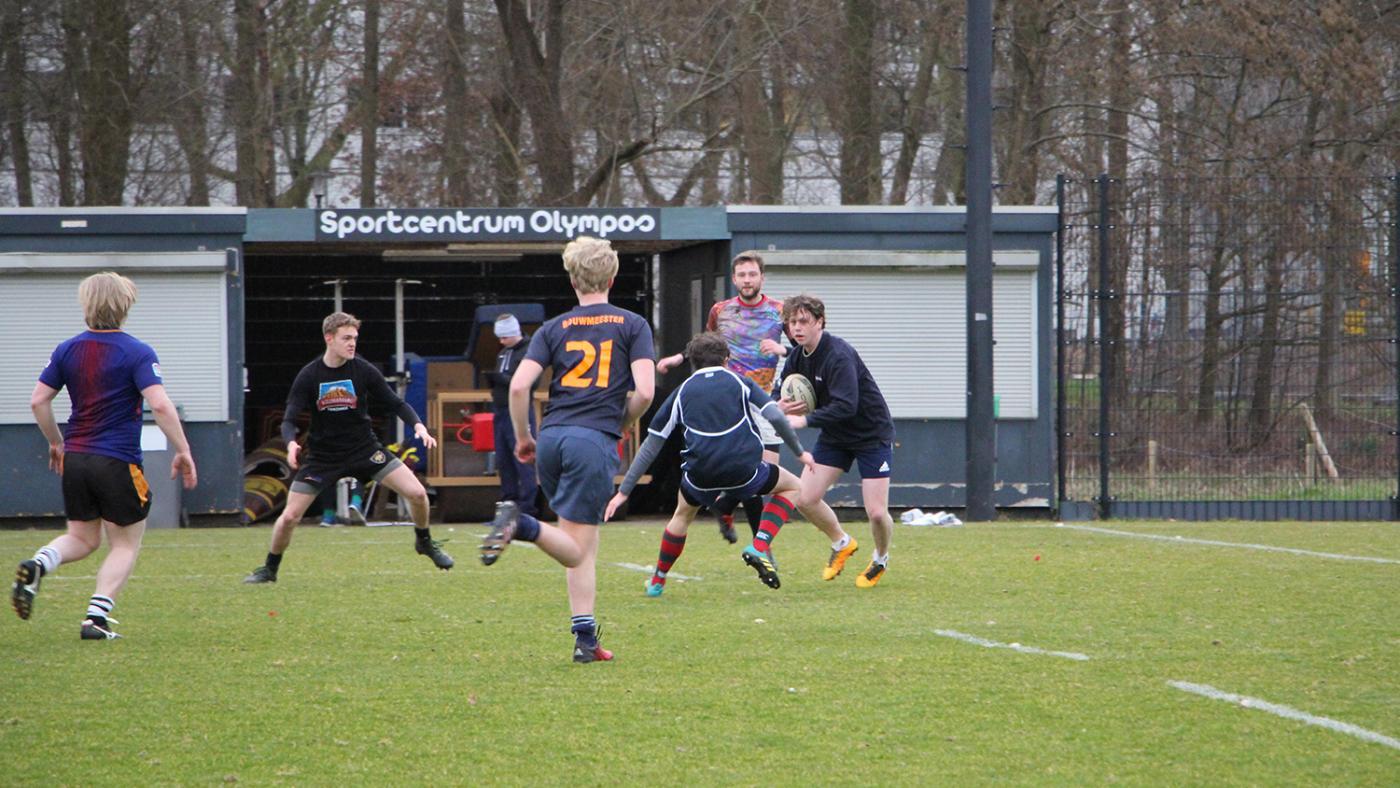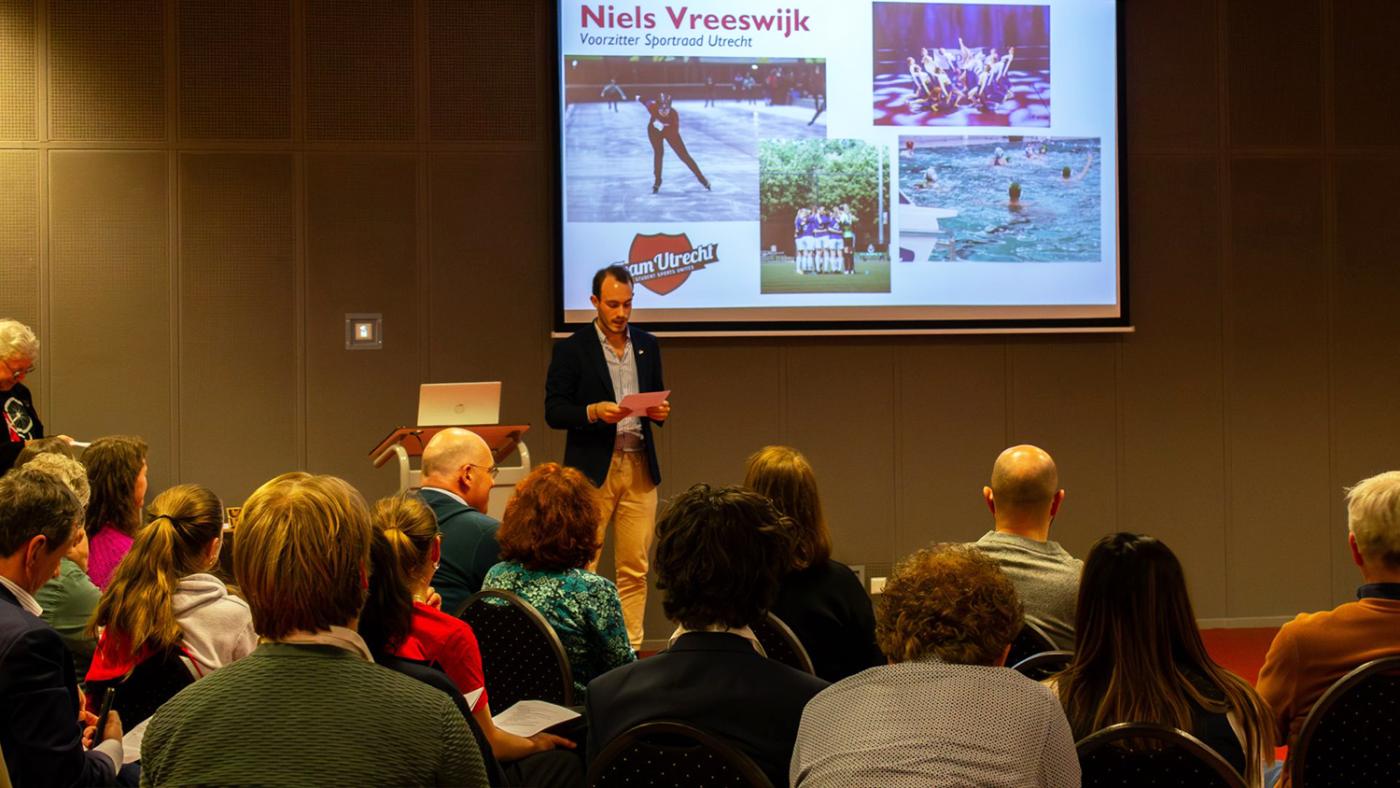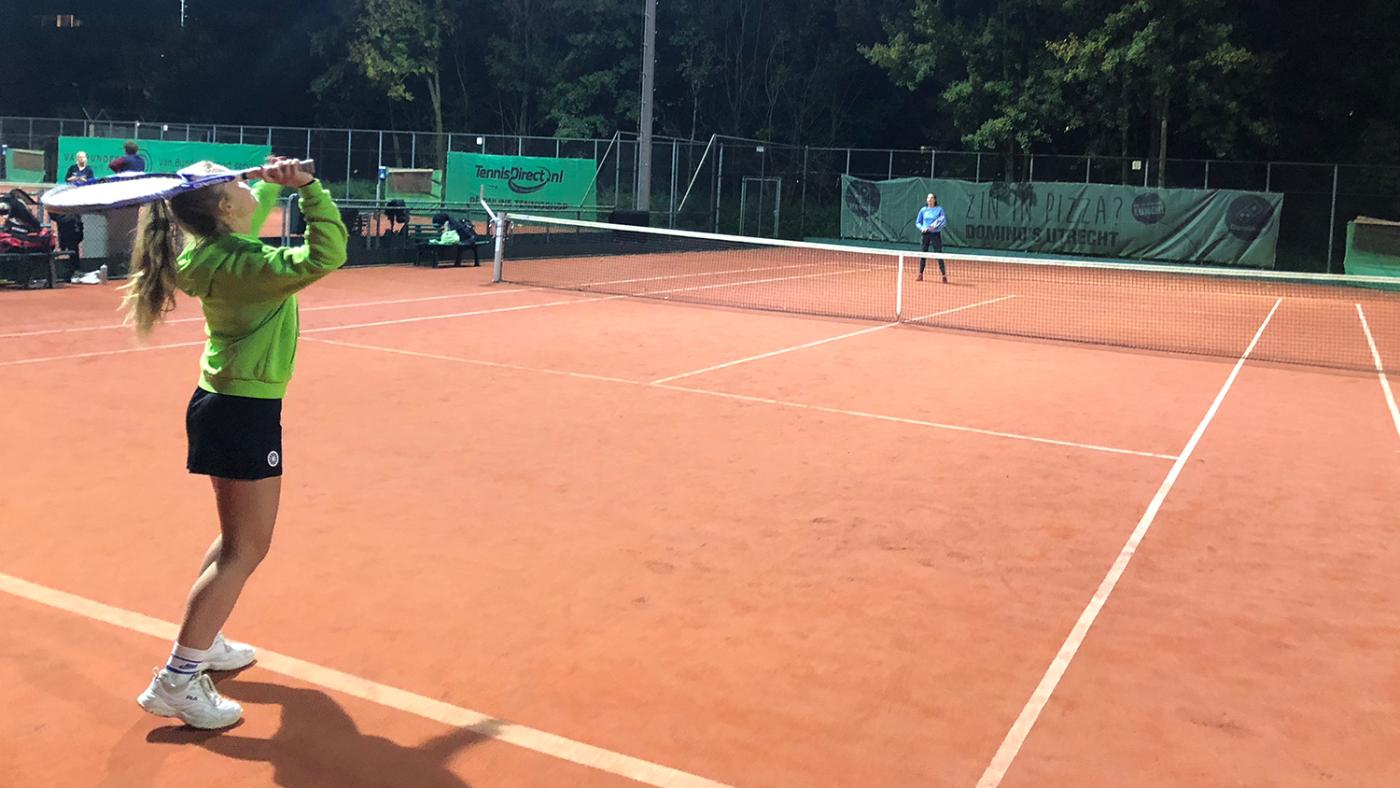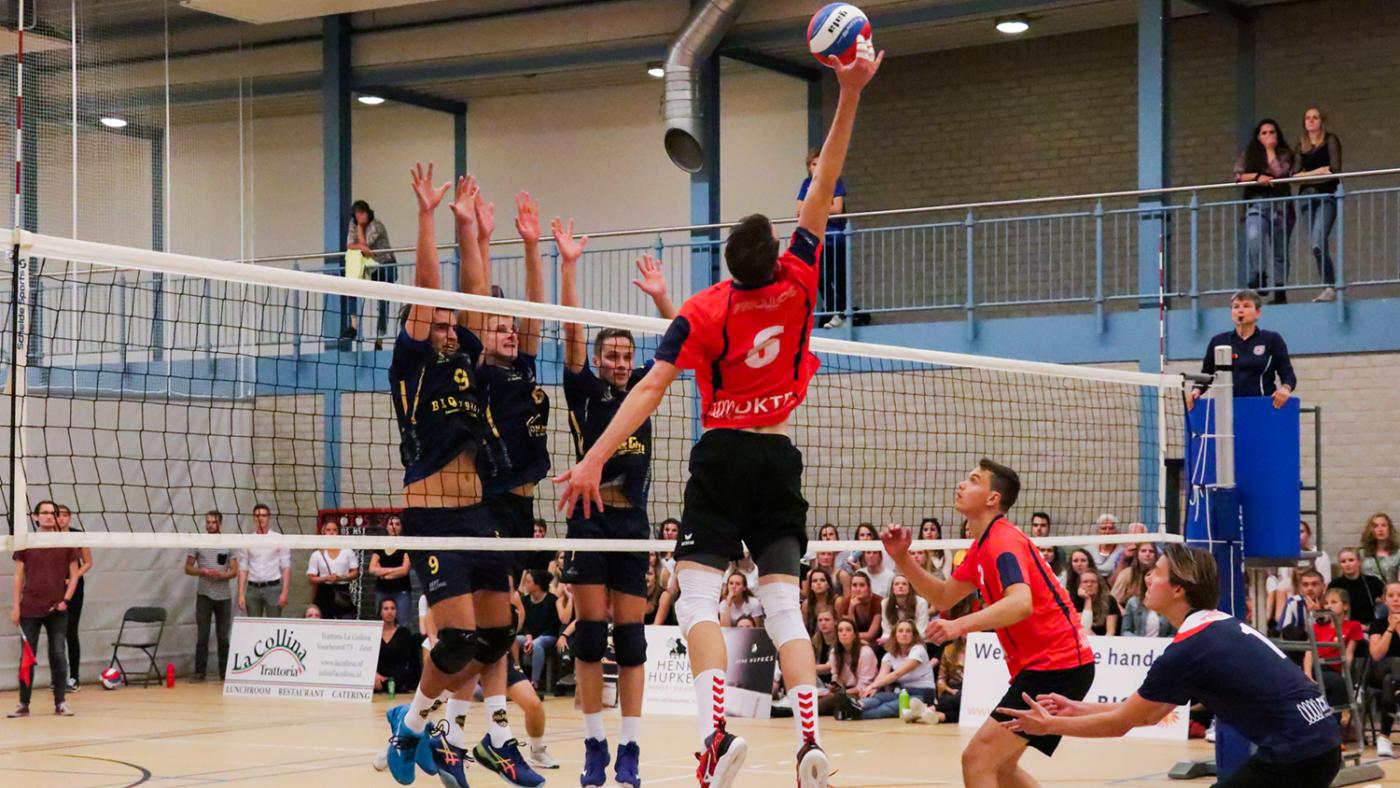Report indicates shortage of sports facilities
Student-athletes want Olympos to grow, UU tempers expectations

Several student sports associations in Utrecht do not have the minimum training space stipulated by their sports unions. That's what a study by Mulier Institute reveals (in Dutch, Ed.). For example, the hockey club USHC only has two pitches at its disposal despite needing three and rugby players have one instead of the prescribed two.
Indoor athletes are running out of space too, according to the report. Olympos' three halls are fully booked each evening, with students playing volleyball, basketball and handball. It is impossible to schedule additional training sessions, which is why the hockey players have to move to an inflatable hall at Groenekan.
The report says that about 13,500 people currently have an Olympas, the membership card that allows them to use the sports centre. 86 per cent of them are students. Over 6,000 people are affiliated with a student sports association.
Less and less space
The shortages will increase if more student accommodation becomes available in Utrecht, predicts Mulier Institute. The current plan is to double the number of rooms at Utrecht Science Park by 2040. In addition, about 4,000 to 8,000 jobs are set to be created at Utrecht Science Park over the next few decades. The National Institute for Public Health and the Environment (RIVM) is set to move to USP soon, for example.
If the range of sports offered is to grow along with these developments, Olympos will need four hockey fields instead of three. In that case, the number of members of indoor sports clubs will increase from 1,300 to 1,700 by 2040. According to the Mulier Institute, these figures justify the construction of more halls or larger halls.

An informative meeting held by the Utrecht Sports Council. Photo: courtesy of Utrecht Sports Council
Crystal clear
“This is the ultimate confirmation of what we have been saying for years,” says Niels Vreeswijk, chair of the Utrecht Sports Council, which represents all student-athletes in the city. “An independent institute has now made it crystal clear that we need more space and that the problems will get worse if the number of fields and halls is not increased.”
Vreeswijk points out that the calculations made by Mulier Institute do not even take into account the associations' long waiting lists. According to the Sports Council, about 3,000 students would like to join one of the student sports associations but they cannot.
Olympos Director Cees Verhoef also welcomes the report. According to him, UU leads the list of universities with the most students affiliated with sports associations, but it is only average when it comes to the number of fields and halls available. “I call on the university and the university of applied sciences to be ambitious and work on enlarging the sports complex.”
The end of its lifespan
UU asked Mulier Institute to map out the current and future use of the sports centre. The report is therefore set to influence the decision-making process regarding the construction of a new sports centre. In its current form, Olympos will reach the end of its lifespan in 2028, when it will need to be replaced. By summer, the university wants to decide what the new Olympos should look like and how much the changes should cost.
At first, the university had decided that Olympos should stay in the same place it is now. At the time, UU stated that it was committed to building an additional hockey field and an additional football field, as well as installing artificial turf on the field that is currently used for rugby and football. However, building more tennis courts and expanding the indoor space would probably be challenging. In the meantime, a consultancy firm has drawn up several scenarios regarding how the indoor sports facilities can be expanded and what that would cost. These will be submitted to the Executive Board shortly.

The value of sport
In an op-ed for DUB, Vreeswijk expressed his concern that the Executive Board will focus on costs rather than the benefits of an active lifestyle for the wellbeing and personal development of its students. He argues that exercising might even improve study results and prevent dropouts.
Cees Verhoef also hopes that the Executive Board will “take the benefits of sports into account” when deciding Olympos' future. Last week, researchers from the University of Applied Sciences in Arnhem and Nijmegen (HAN) calculated that an hour of exercise per week yields society about 250 euros per month in positive health and wellbeing effects.
According to Verhoef, if one makes a similar calculation for Utrecht, current student-athletes' "wellbeing value" is about 25 million euros. Students who have to stand on the sidelines due to capacity problems do not have access to those benefits. “I know it is nonsense to attribute this value entirely to the sports centre, but it is of utmost importance that the value of sport is also taken into account.”
No rose-coloured glasses
Bettina Nelemans is the staff member who represents the university in dealing with the sports foundation Mesa Cosa, the Olympos Sports Centre, and the Utrecht Sports Council. According to her, UU employees are still analysing the many scenarios that could occur.
The future of the funding relationship between the university and the Mesa Cosa Foundation must be examined before the Executive Board makes its decision in July. According to Nelemans, the university will pay attention to the value of sports, as requested by Vreeswijk and Verhoef, although she admits that it will be hard to get a detailed picture of such benefits in the short term. “But a report such as the one made by HAN can certainly come in handy.”
Moreover, Nelemans warns against wearing rose-coloured glasses. All scenarios that include an expansion of the sports facilities are above the budget the Executive Board was planning on allocating for this. That is not a popular message at a time when the university is having to make difficult choices about USP's layout and the expected costs of other building plans only seem to be increasing. The university is even open to the cheapest option, which would be renovating the current sports centre.
To Vreeswijk, merely renovating the sports centre would be “a disastrous scenario” for student clubs. “They could build something next to the current Olympos. Where would athletes go if the sports centre closed for the better part of two years? That’s unacceptable.”

Covenant
Nelemans acknowledges that none of the options being considered would fully meet the need for sports facilities as calculated by Mulier Institute for 2040. “If we want to achieve something there, we should collaborate more with the municipality. Maybe we can come up with smart ways to help each other meet that future demand.”
She refers to a proposal by the Utrecht Sports Council of drawing a covenant in which the municipality, educational institutions, companies and student sports would join forces to investigate ways to offer the opportunity to practice sports to as many students and staff members as possible.
Chair Niels Vreeswijk came up with this plan in a council information meeting held last month. In this meeting, city council members were updated on the problems faced by student sports associations. It became clear that there is a shortage of sports facilities in the city of Utrecht and elsewhere, especially during peak hours (between 6:00 and 10:00 pm). For example, the indoor hockey players of USHC in Groenekan can only play late in the evening and don’t come home before midnight, while the members of the volleyball club Protos train until 12:30 am. After that, they still have to clean up, take a shower and go home.
Nevertheless, Vreeswijk believes that synergy can be found. “It’s about being able to take a positive approach, instead of one person saying they can’t afford something and the other saying they don’t want to pay. Let’s start with the importance of student sports. Why can’t we make agreements that benefit both parties? If the municipality invests in rowing water on Rijnenburg, the university can build an additional hall where other Utrecht residents could also play sports.”
He adds that the issue could lead to student sports clubs leaving Olympos to train somewhere else. “We would like our students to exercise here as much as possible, but if we can't make that happen, then we would love to do it someplace else. As long as we do it together. As far as I’m concerned, all students interested in playing sports should be allowed to do so.”